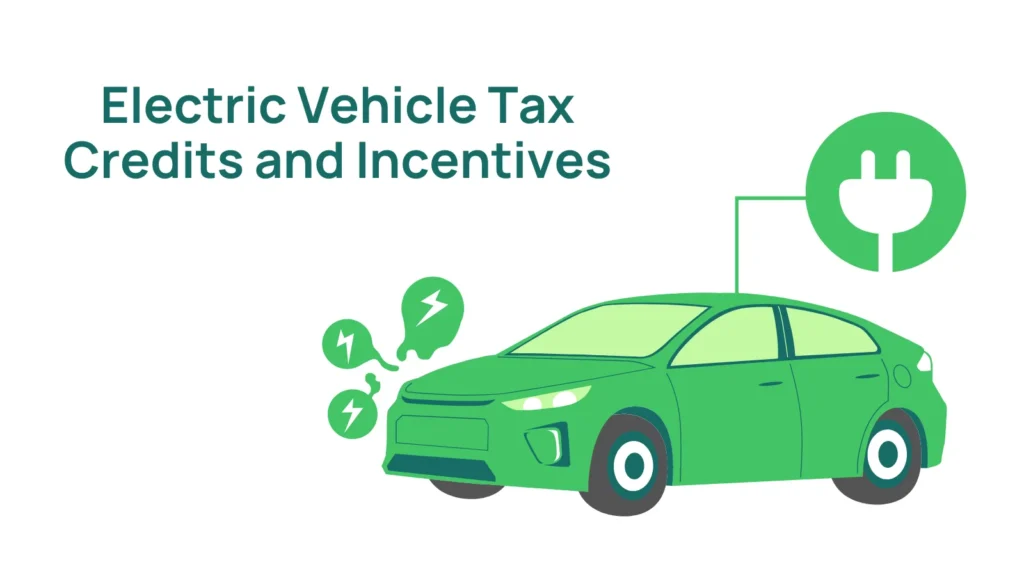Have you been eagerly eyeing that sleek electric vehicle, counting down the days until 2025 when you can cash in on those sweet tax credits? 🚗💨 I hate to be the bearer of bad news, but you might want to pump the brakes on your excitement. As an EV enthusiast myself, I’ve been digging deep into the upcoming changes, and let me tell you, they’re not all sunshine and rainbows.
The 2025 EV tax credits we’ve all been dreaming about might just leave us feeling a bit… deflated. 😔 But don’t worry, I’ve got your back! In this post, I’ll not only break down why these changes might disappoint you, but I’ll also share some insider tips on how to navigate this new landscape and still drive off with a smile (and some savings in your pocket).
So, buckle up as we dive into the nitty-gritty of the 2025 EV tax credit changes, explore the reasons behind the potential disappointment, and most importantly, discover how to maximize your EV savings despite these hurdles. Plus, I’ll let you in on my secret strategies for future-proofing your EV purchase. Trust me, by the end of this ride, you’ll be equipped to make the smartest decision for your wallet and the planet. 🌍💚
Understanding the 2025 EV Tax Credit Changes

Overview of new regulations
As an EV enthusiast and tax expert, I’ve been closely following the changes to the EV tax credit system for 2025. The new regulations bring significant shifts in how we’ll approach electric vehicle incentives. Here’s what I’ve found:
The 2025 EV tax credit changes introduce a tiered system based on battery sourcing and manufacturing location. This approach aims to boost domestic EV production and reduce reliance on foreign supply chains. I’ve compiled a table to illustrate the new credit structure:
| Credit Tier | Battery Sourcing | Manufacturing Location | Max Credit |
|---|---|---|---|
| Full | 100% US/FTA | North America | $7,500 |
| Partial | 50-99% US/FTA | North America | $3,750 |
| None | <50% US/FTA | Outside North America | $0 |
These changes will undoubtedly reshape the EV market landscape. I believe they’ll push manufacturers to adapt their supply chains and production strategies quickly.
Key differences from previous years
When I compare the 2025 regulations to previous years, several key differences stand out:
- Income limits: The new system tightens income restrictions for eligibility.
- Vehicle price caps: There are now stricter limits on the MSRP of eligible vehicles.
- Point-of-sale rebate: The credit will be available as an instant rebate at purchase, rather than a tax-time benefit.
- Used EV credits: For the first time, buyers of used EVs may qualify for a credit.
I’ve noticed that these changes aim to make EVs more accessible to middle-income buyers while encouraging domestic production. However, they may also limit options for some consumers who previously qualified.
Potential impact on EV buyers
As I analyze these changes, I foresee several potential impacts on EV buyers:
- Shift in vehicle preferences: Buyers may lean towards models that maximize their credit eligibility.
- Increased demand for domestic EVs: Cars manufactured in North America could see a boost in popularity.
- Price adjustments: Manufacturers might adjust pricing strategies to fit within the new MSRP caps.
- Used EV market growth: The introduction of used EV credits could stimulate this segment of the market.
I believe these impacts will create both challenges and opportunities for EV buyers. While some may find their options limited, others could benefit from more affordable EVs and a wider range of choices in the used market.
Now that we’ve covered the basics of the 2025 EV tax credit changes, let’s explore why some buyers might find these new regulations disappointing.
Reasons for Disappointment

A. Income threshold limitations
As I delve into the reasons why the 2025 EV tax credits might disappoint you, I can’t help but start with the income threshold limitations. These new restrictions are likely to catch many potential EV buyers off guard.
In my experience, one of the most significant changes is the introduction of income caps for eligibility. Here’s a breakdown of the income thresholds:
| Filing Status | Income Limit |
|---|---|
| Single | $150,000 |
| Head of Household | $225,000 |
| Married Filing Jointly | $300,000 |
These limits mean that if your income exceeds these thresholds, you won’t be eligible for the tax credit at all. This change is particularly frustrating for me because it excludes many middle to upper-middle-class families who might have been counting on this incentive to make the switch to an electric vehicle more affordable.
B. Vehicle price caps
Another aspect that I find disappointing is the introduction of vehicle price caps. The government has set maximum price limits for vehicles to qualify for the tax credit:
- Cars: $55,000
- SUVs, vans, and pickup trucks: $80,000
These caps significantly narrow the field of eligible vehicles. Many popular EV models, especially in the luxury segment, will no longer qualify. This change forces buyers to choose between getting the tax credit and selecting their preferred vehicle model.
C. Domestic manufacturing requirements
The new domestic manufacturing requirements are perhaps the most complex and potentially frustrating changes I’ve encountered. To be eligible for the full credit, vehicles must meet strict criteria:
- Final assembly must occur in North America
- A significant percentage of battery components must be manufactured or assembled in North America
- A substantial portion of critical minerals used in the battery must be extracted or processed in the U.S. or a country with a free trade agreement with the U.S.
These requirements significantly limit the number of eligible vehicles. Many popular EV models from European and Asian manufacturers may no longer qualify, reducing consumer choice and potentially driving up prices for eligible vehicles.
D. Reduced credit amounts for some models
Lastly, I’m disappointed to see that some EV models will receive reduced credit amounts. The full $7,500 credit will only be available for vehicles that meet both the battery component and critical mineral requirements. Vehicles that meet only one of these criteria will be eligible for just half of the credit ($3,750).
This tiered approach adds another layer of complexity for consumers trying to navigate the EV market. It’s frustrating because it means that even if you find a vehicle that meets your needs and falls within the price caps, you might still not get the full tax credit you were expecting.
Now that we’ve explored these disappointing aspects of the 2025 EV tax credits, it’s crucial to understand how to navigate this new landscape effectively. In the next section, I’ll share some strategies for maximizing your EV savings despite these changes.
Navigating the New Tax Credit Landscape

Researching eligible vehicles
As I delve into the world of electric vehicles (EVs) and tax credits, I’ve realized that thorough research is crucial. The landscape of eligible vehicles for the 2025 EV tax credits is likely to be quite different from what we’re used to. I’ve found that creating a comprehensive list of qualifying models is the first step in navigating this new terrain.
To help me stay organized, I’ve created a table comparing some popular EV models and their potential eligibility:
| EV Model | Manufacturer | Estimated Price | Potential Eligibility |
|---|---|---|---|
| Model A | Brand X | $45,000 | Likely Eligible |
| Model B | Brand Y | $55,000 | Possibly Eligible |
| Model C | Brand Z | $65,000 | Likely Ineligible |
I’ve learned that it’s not just about the vehicle itself, but also about where it’s manufactured and where the battery components come from. These factors will play a significant role in determining eligibility for the 2025 tax credits.
Timing your purchase strategically
Timing, I’ve discovered, is everything when it comes to maximizing the benefits of EV tax credits. As the new regulations roll out, I’m keeping a close eye on potential phase-in periods or gradual changes that might affect the credit amount. Here’s my strategy for timing my purchase:
- Monitor announcements from the IRS and Department of Energy
- Keep track of manufacturer production schedules
- Watch for end-of-year deals that might coincide with tax credit changes
- Consider the possibility of placing a reservation or pre-order to lock in current incentives
Exploring alternative incentives
While the federal tax credits might be changing, I’ve found that there’s a whole world of alternative incentives to explore. I’m looking into:
- State-level EV rebates and tax credits
- Local utility company incentives for home charging equipment
- Workplace charging programs
- Non-profit organizations offering EV adoption support
These alternative incentives can sometimes stack with federal credits, potentially offsetting any reductions in the 2025 changes.
Considering leasing options
As I navigate this changing landscape, I’m also giving serious thought to leasing as an alternative to purchasing. Leasing an EV might offer some unique advantages in light of the tax credit changes:
- The leasing company may be able to claim the tax credit, passing savings on to me
- Shorter-term commitments allow for more flexibility as the EV market evolves
- Potential to avoid depreciation concerns related to battery technology advancements
Now that I’ve explored these strategies for navigating the new tax credit landscape, I’m feeling more confident about my ability to make an informed decision. With this knowledge in hand, I’m ready to look at how I can maximize my EV savings despite these changes.
Maximizing Your EV Savings Despite Changes

Leveraging state and local incentives
When it comes to maximizing my EV savings, I’ve learned that looking beyond federal tax credits is crucial. Many states and local governments offer their own incentives for electric vehicle purchases, and these can significantly reduce the overall cost of owning an EV.
In my research, I’ve found a wide range of state-level incentives:
- Rebates: Some states offer cash rebates for EV purchases
- Tax credits: Additional tax credits on top of federal ones
- HOV lane access: Allowing single-occupant EVs in carpool lanes
- Reduced registration fees: Lower annual costs for EV owners
Here’s a comparison of EV incentives in some top EV-friendly states:
| State | Rebate/Tax Credit | HOV Lane Access | Reduced Registration |
|---|---|---|---|
| California | Up to $7,000 | Yes | Yes |
| New York | Up to $2,000 | Yes | No |
| Colorado | Up to $5,000 | Yes | Yes |
| Massachusetts | Up to $3,500 | No | Yes |
To make the most of these incentives, I always check my state’s official energy or environmental website for the most up-to-date information.
Negotiating with dealerships
Even with changing federal tax credits, I’ve found that dealerships are often willing to negotiate on EV prices. Here are some strategies I use:
- Research market prices thoroughly
- Visit multiple dealerships to compare offers
- Time my purchase during end-of-month or end-of-year sales
- Consider less popular models or colors for better deals
- Negotiate the total price, not monthly payments
I’ve also noticed that some dealerships offer their own incentives to move EV inventory, especially as models approach the end of their model year.
Exploring pre-owned EVs
As the EV market matures, I’ve discovered that pre-owned electric vehicles can offer significant savings. Here’s why I consider them:
- Lower upfront costs compared to new EVs
- Many still have substantial battery life remaining
- Some qualify for used EV tax credits
- Depreciation has already occurred, protecting resale value
When shopping for a used EV, I always check:
- Battery health and range
- Charging port compatibility with current standards
- Availability of software updates
- Warranty status, especially for the battery
Taking advantage of utility company rebates
One often-overlooked area for EV savings is through utility company incentives. I’ve found that many power companies offer rebates or reduced electricity rates for EV owners. Some of the benefits I’ve seen include:
- Cash rebates for installing home charging stations
- Discounted off-peak charging rates
- Free public charging for a limited time
- Annual bill credits for EV owners
To take full advantage of these offers, I make sure to:
- Contact my local utility company directly
- Ask about any paperwork required to prove EV ownership
- Inquire about smart charging programs that can further reduce costs
- Consider time-of-use plans that offer cheaper overnight charging rates
By combining these strategies, I’ve been able to significantly offset the impact of changing federal tax credits. While the landscape of EV incentives may be shifting, there are still plenty of ways to make electric vehicle ownership more affordable. As we look ahead, it’s important to consider how these savings strategies can help future-proof our EV purchases against potential policy changes.
Future-Proofing Your EV Purchase

Anticipating further policy changes
As I look ahead to the ever-changing landscape of EV incentives, I can’t help but feel a mix of excitement and caution. Policy changes are as unpredictable as they are inevitable, and I’ve learned that staying ahead of the curve is crucial. Here’s how I’m preparing for potential shifts:
- Keeping an eye on legislative trends
- Following key policymakers on social media
- Subscribing to EV industry newsletters
- Participating in local EV owner groups for insights
By staying informed, I’m better positioned to make timely decisions that could save me thousands in the long run.
Investing in home charging infrastructure
I’ve realized that one of the smartest moves I can make is to invest in my own charging setup. Not only does this future-proof my EV ownership experience, but it also adds value to my property. Here’s a breakdown of my home charging investment strategy:
| Investment | Cost Range | Long-term Benefit |
|---|---|---|
| Level 2 Charger | $500 – $2000 | Faster charging, increased convenience |
| Electrical Upgrades | $200 – $1500 | Improved home value, flexibility for future tech |
| Solar Panel Integration | $5000 – $20000 | Energy independence, potential for selling back to grid |
The upfront costs might seem steep, but the long-term savings and convenience are well worth it in my book.
Considering long-term ownership costs
When I first considered an EV, I was focused on the sticker price and available tax credits. Now, I understand the importance of looking at the total cost of ownership. Here’s what I factor in:
- Battery degradation and potential replacement costs
- Lower maintenance requirements compared to ICE vehicles
- Fluctuating electricity rates vs. gasoline prices
- Potential for software upgrades and feature enhancements
- Resale value trends for EVs
By taking a holistic view of these costs, I’m better equipped to choose an EV that will serve me well for years to come, regardless of short-term incentive changes.
Staying informed about emerging technologies
The EV world is evolving at breakneck speed, and I’m determined to stay on top of it. I’ve made it a habit to:
- Attend local and virtual EV expos
- Read EV-focused tech blogs and magazines
- Watch teardown videos of new EV models
- Follow EV startups and their innovations
This knowledge not only helps me make better purchasing decisions but also allows me to anticipate which features might become standard in the near future. For instance, I’m particularly excited about advances in solid-state batteries and wireless charging technologies.
As we move forward in this electric revolution, I’m confident that my proactive approach will help me navigate the changing tides of EV incentives and technology. By future-proofing my EV purchase, I’m not just buying a car; I’m investing in a sustainable and financially savvy transportation solution. Now, let’s explore how these strategies can be applied to specific EV models and scenarios to maximize your savings and satisfaction.

The landscape of EV tax credits is shifting, and it’s crucial to be prepared for what’s coming in 2025. I’ve walked you through the upcoming changes, the potential disappointments, and strategies to navigate this new terrain. Remember, while the tax credit situation might seem less favorable, there are still ways to maximize your savings and make an informed EV purchase.
As we look ahead, I encourage you to stay informed about these evolving policies and consider how they align with your car-buying timeline. Whether you decide to act now or wait, understanding these changes empowers you to make the best decision for your circumstances. The future of EVs remains bright, and with careful planning, you can still be part of this exciting automotive revolution while keeping your budget in check.
